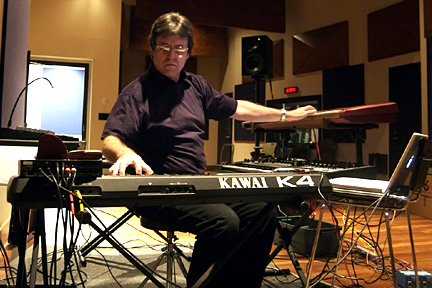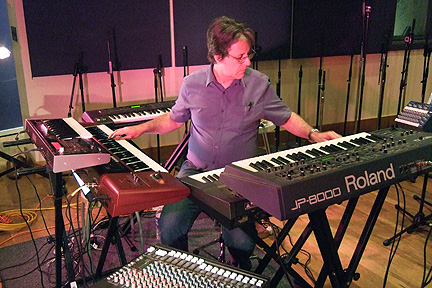| Profile: David Wright | |
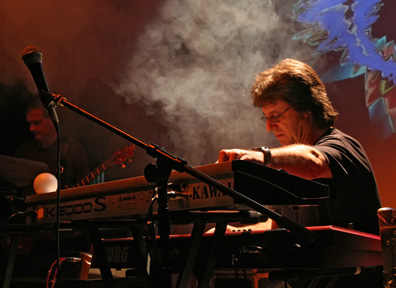 | David Wright is considered one of the UK's leading exponents of melodic instrumental music. Since his debut album in 1989 Wright has released numerous solo works and earned respect as a live performer. |
| His music is characterized as being atmospheric, flirting with the ambient and ethereal, while his melodies connect to jazz and eastern music. Wright's albums seem like journeys propelled by a gentle rhythmic motion. By combining electronic sonorities with emotional gravity, the resulting music is rich with unique ideas, refined ambient tones and elegant melodies. | 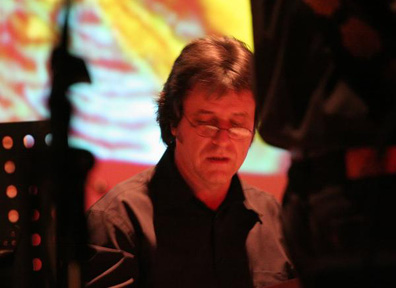
|
| Wright's music has been likened to Kitaro, Vangelis, Mike Oldfield and Yanni. An established live performer, he has appeared with, amongst others, Jonn Serrie and Klaus Schulze. Wright co-founded the electronica group Code Indigo as well as makes up half of the instrumental duo Callisto. His music has featured on Sky, British TV and numerous international CD compilations. | |
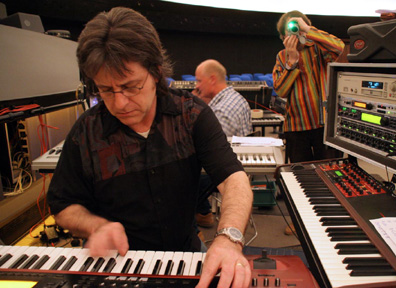 | Wright's work spans a broad spectrum of styles but is always thematic with strong melodic structure as it combines romanticism, sequences, atmospherics and varied rhythmic elements. His music has been characterised as emotive and expressive. The gently rhythmic style is also laced with classical, rock, jazz and cultural influences making his albums as diverse as they are original. | |
|
British electronic musician David Wright made his east-coast debut in Phiadelphia within the remarkable setting of St. Mary's Hamilton Village on 29 September 2007 as part of The Gatherings Concert Series.
Following this performance, Wright played a live set of new material on the 09.30.07 broadcast of STAR'S END. ~
David Wright returned to Philadelphia for more concerts in September 2012 - when he performed at The Gatherings Concert Series on 15 September 2012, then on into the night on the 09.16.12 broadcast of STAR'S END | ||
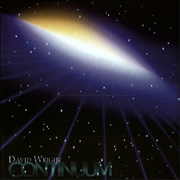 Review: Continuum by David Wright
Review: Continuum by David Wright
Wright creates melodic space music that combines pure ambient sound and more melodic elements. His music draws on the best aspects of ambient, new age and space music. In addition to releasing solo work, he is part of the group Code Indigo. His recent solo release, Continuum is a selection of 5 extended tracks. The tracks work together to take the listener on a journey through the last 30 years of electronic space music. The CD packaging features space and computer graphics imagery, which effectively represents the contents. The music should appeal to fans of traditional synth music, orchestral electronica and ambient music. Continuum falls into the tradition of synth music albums from the 70's and 80's, and revisits some of these classic sounds and styles. Fans of early synth artists like Tangerine Dream, Klaus Schulze, Vangelis and Michael Stearns will find much to enjoy. The title, Continuum, seems very appropriate, because the tracks create a continuous space music journey; the music evokes the mystery and wonder of space and time; and it continues and expands on the styles and sounds of earlier space music. One of the most striking aspects of the music is its orchestration. Wright creates masterful space music arrangements, weaving together ambient effects, synth strings, sample-based vocals and solo synth leads. Wright's "string" arrangements are lush, and recall Vangelis' work. The CD starts off with "Dark Matter", a track that combines dark ambient sounds with female vocals. Wright makes interesting use of filtered noise effects and subtle sequences. The vocals sound plaintiff over the drone-based backing. From the liner notes, it looks like the vocals come from sample disks. Wherever they are from, they are lovely and integrate hauntingly with the music. Continuum is an extended trip back to 70's electronica, and is a highlight of the CD. It features an ostinato sequence that carries through most of the track's near-twenty minute length. If Klaus Schulze and Vangelis had cut a track together in the late 70's, but with today's equipment, it might have sounded something like Continuum. It starts out with swirling ambient noises, and then adds a insistent sequence and Schulze-style Moog lead. Wright gives the track plenty of space to breath, cruising along for about 12 minutes, before building things up with piano, synth choir and Vangelis-style synth strings. Without sounding derivitave, the track pays respect to the early days of space music. Track 3, "Bridge of Souls", is an extended piece that explores drone-based space music ambiences. The track returns to the darker sound of the first track, exploring filtered-noise wind sounds and ambient effects. This blends directly into "Island of Flight". This is also a drone-based piece, and features tasteful synth soloing. This evolves more into blissfully rhythmic "cruising" style of space music, with pulsing sequences and lovely "guitar" work. The final track "Cassini" further explores the "cruising" style of space music. The track uses sequences and subtle percussive sounds to propell the music, and adds melodic lead soloing. The synth solo features the main melody of the piece which is repeated until it climaxes in grand synth style. Wright uses Apollo-era NASA samples briefly, which helps take things back to the old school of synth music, and brings in choral vocals and soaring synth strings to give the track a massive sound. This brings the track and the CD to a satisfying, upbeat peak, before fading in to a gentle denoument. - Synthtopia 27 February 2007 | ||
Related Links:
| ||
| Artists | ||
